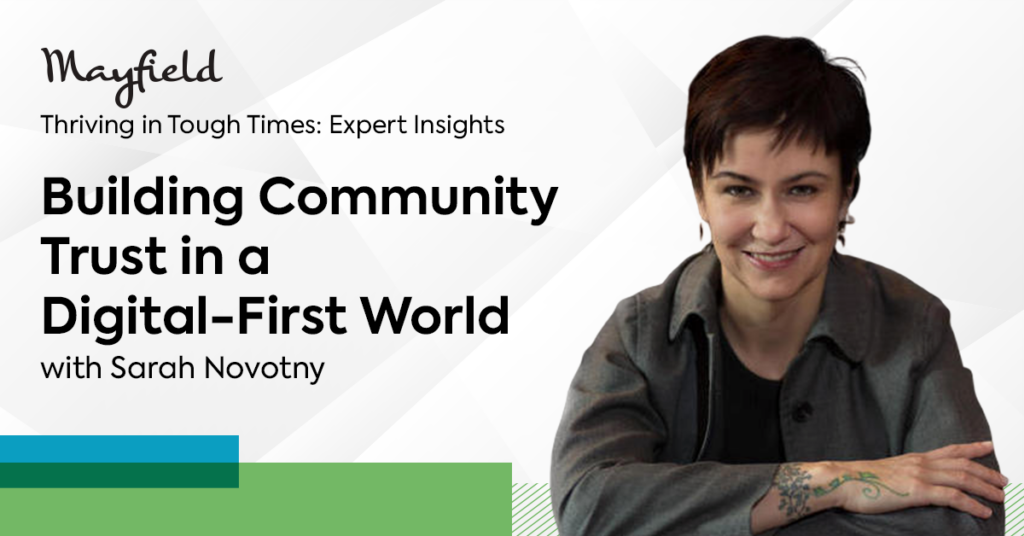


For many, this new remote-first culture has fundamentally changed the way people connect. Even beyond the obvious disruptions in work and schooling, most of us rely on direct human interactions for growth, feedback, and a sense of community. However, large open source communities are globally distributed and have already had the chance to develop many tools around remote culture. Our speaker, Sarah Novotny, has long been an open source champion in projects such as Kubernetes, NGINX and MySQL. She is part of the Microsoft Azure Office of the CTO, sits on the
Linux Foundation Board of Directors, previously led an Open Source Strategy group at Google, and ran large scale technology infrastructures before web-scale had a name. Sarah shared her lessons learned and best practices for building digital communities – here are some of her key takeaways:
Building communities is always a give and take, both in terms of trust (vulnerability & reciprocation), and also in terms of benefit. You can’t just take from them and not give back.
Their feedback is a gift. They took the time to engage with you – even if it’s negative feedback, you have the chance to turn them into an ally through communication.
Try to get people to engage on topics that are broader than just the work product. Have off-topic conversations, start meetups with a more personal tone, and implement funny ideas that bring people together.
Some people learn better through live chats and meetups, others through long-form pieces or Q&As. Define a formal method of communication for the group and then follow it, and know that this communications system could include multiple channels. Successful communities often have a chat system, forum system, mailing list, and even actual video chat.
Webinars can be stodgy and outdated. Try experimenting with break rooms and other methods to simulate 1:1 breakouts and coffee break conversations. Experiment with diverse ways of engaging visually – emojis, GIFs, or fun backgrounds on your video chats can be a great way to create engagement.
If you want people to be on-time or take notes, for example, make it a fun game. Small things like even a written thank-you note will get posted on Twitter because people feel heard, seen, and engaged. People should gain value from participating. The most common gamification methods of reward are status (banners, titles, or contributor levels on a forum); access (to important people, to betas, to new features); power (give people “level up” options to become super-users, moderators, or even maintainers); and stuff (swag, written notes, other gifts).
Keeping a group together is progress, but working together and getting successful outcomes is really the ultimate measure of success. Have your community members chime in on how best to harness the power of the community – they can help guide you.
As a vendor, you should still run the meetings while the group is growing/bootstrapping. Later on you can move the platform into the hands of the contributors. It’s okay if not all of your content is super polished – it looks more human that way.
You don’t need to have tons of rules and governance upfront. Add things as you scale up when you need it, not right off the bat. Otherwise it can be constraining.
The ideal cadence of meetings of communications is going to depend on your goals. You could tie meetups to a monthly release if you’re just talking about a product. But, if your community is wider in scope (e.g. about changing the techno-cultural revolution) you have a much greater possibility of keeping people interested much more often and keeping them more engaged.
For open source at least, that can be a faux pas. The community is not the consumer. They are giving their time and want to use the free product. Your customer doesn’t want to put in the time, so they pay. If you try to sell to people, you lose that two-way street that’s so important with communities. You can, however, bring prospects to your community to include them.
Thanks to Sarah for sharing her insights on building community in an increasingly digital-first world. For more expert insights on thriving in tough times, check out the previous posts in the series.
Originally published on Crunchbase
